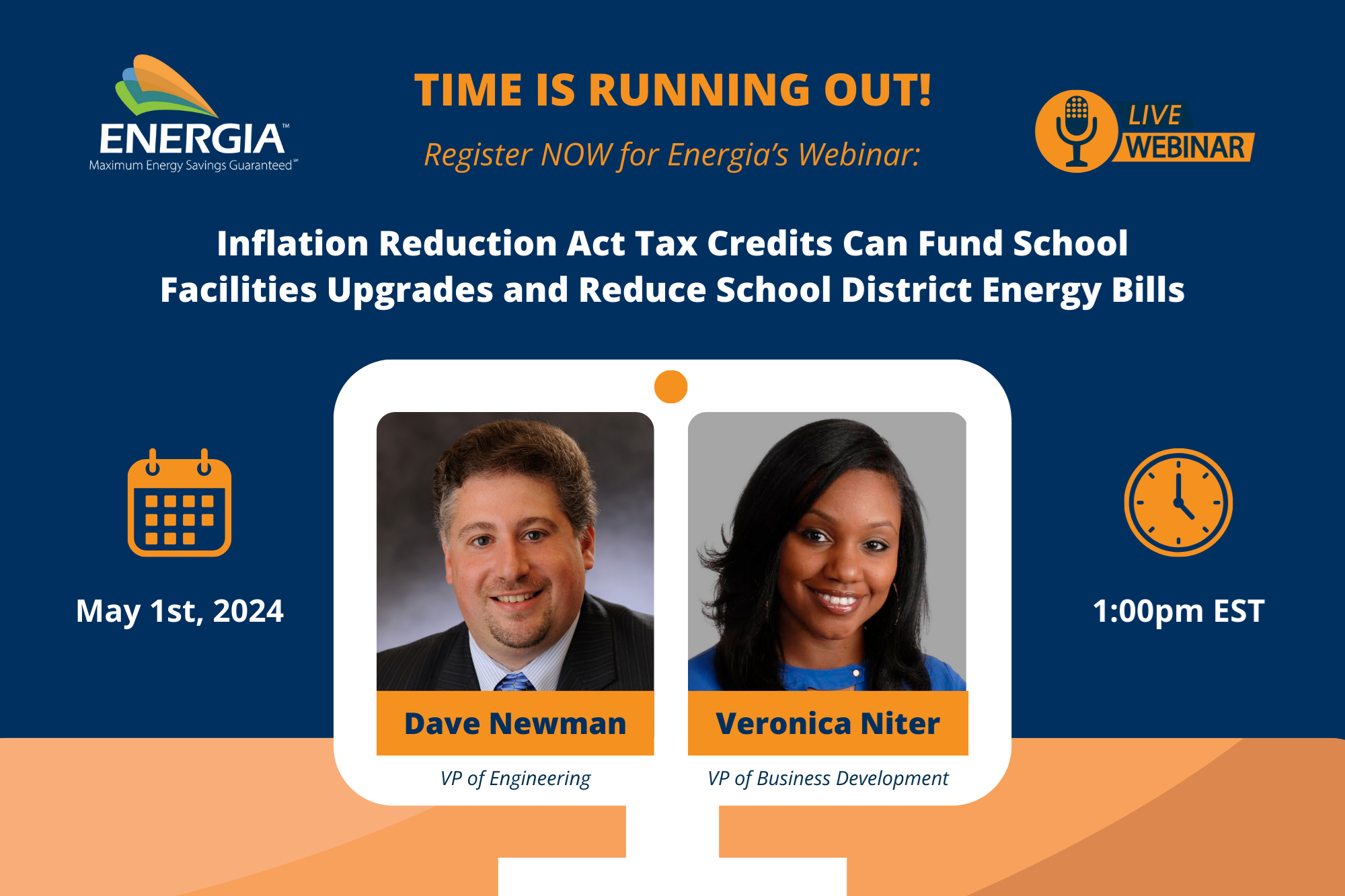Energy savings performance contracts can help municipalities and school districts pay for improvement projects, but not without oversight.
By Kendra McQuilton, Chief Executive Officer
Energy Savings Performance Contracts (ESPCs) are powerful financing tools municipalities and school districts can use to fund capital improvement projects with money saved from improved energy efficiency and reduced operating expenses.
For municipal governments and school districts across the United States, the opportunity to transform unrealized energy cost savings into improvement projects that pay for themselves is almost too difficult to pass up.
That’s the promise of an Energy Performance Contract (EPC) or Energy Savings Performance Contract (ESPC), financing mechanisms for energy, water, renewables, and resilient capital improvement projects that are paid for using money saved from improved energy efficiency and reduced operating expenses. But recent findings from an ongoing federal investigation revealed such contracts were improperly used to pay for bribes and kickbacks to elected officials in Texas, putting the spotlight on the risks and potential pitfalls of improperly managed ESPCs.
Energia’s proven process for energy savings success allows school districts and municipalities to harness the benefits of ESPCs while also mitigating risk. Common missteps and Energia’s seven step process were discussed on an episode of the EnergiaSaves Podcast.
The Pitfalls of Going It Alone
Texas State Senator Juan “Chuy” Hinojosa highlighted the problems with improperly managed ESPCs in a recent news column, “Ending the Misuse of Energy Savings Performance Contracts by Local Governments.”
“The cost of ESPCs can be increased by millions of dollars by simply executing a ‘change order’ proposed by the contractor,” Hinojosa writes. “What starts out as a defined, narrowly focused ESPC project to address certain facilities may soon grow into a proposal through a change order to overhaul heating, ventilation, and air conditioning (HVAC) systems, lighting, plumbing, and water systems. Expanded project scope increases will result in an even larger financial burden to taxpayers if the promised savings fail to materialize.”
The biggest mistake municipalities and school boards make when negotiating an ESPC is the decision to work directly with an energy service company (ESCO).
Senator Hinojosa correctly points out that without proper oversight, what can be a tremendously powerful and positive concept can turn into a project wrought with problems and a lack of value for the school district. Too often organizations partner with an ESCO directly. But the direct partnership means there’s no one in the middle to analyze the ESCO’s savings calculations, which form the foundation for financing.
If those aren’t sound and accurate, organizations will have a poor foundation for the project.
Without proper oversight over the duration of an ESPC, potential cost savings can be wiped out by changes to the project’s initial scope and lead to an even larger financial burden to taxpayers.
Control is Key
The problems with ESPCs that have come to light in Texas can happen anywhere in the country. That’s why it’s so important for school districts to have the right combination of experience and expertise on their side of the negotiating table from the outset of any ESPC.
Control is essential. Energia empowers school districts with control over the process.
Often, school districts or municipalities will opt to enter into an energy performance contract, but soon end up in a situation where the Energy Services Company (ESCO) is running the show, telling them what they can and cannot do.
That’s not to say the contractor isn’t guiding the school district properly, but the district is at the mercy of the ESCO and is therefore in a position of vulnerability.
A Solid Foundation in Seven Steps
School districts can protect themselves by working in partnership with expert energy-savings engineering firms, such as Energia, which has developed a Proven Process for Energy Savings Success.
Energia’s Proven Process for Energy Savings Success ensures that ESPC-related projects are based on sound financial assumptions, protecting municipalities and school districts from preventable risks.
This is a seven-step process that outlines all of the different areas to be managed during an ESPC project to ensure it doesn’t run into the kinds of problems noted in the Texas article.
The seven steps of the Energia Proven Process for Energy Savings Success include:
- Discovery
- Energia Financial Assessment™
- Energia Project Proposal Competition™
- Final Scope and Savings Agreement™
- No-Risk Funding
- Client Site Physical Transformation
- Actual Savings Proven
In the first step of the process, Energia reviews the strategic goals of the school district and comes to understand the facilities challenges it faces. It then identifies potential funding options to overcome those challenges.
The second step is the Energia Financial Assessment™, which includes an analysis of the school district’s strategic goals, financial goals, and sustainability targets. At this stage, the utility data is used to develop a financial model and generate a guaranteed energy savings project plan.
Next comes the Energia Project Proposal Competition™, in which Energia develops and issues a highly customized and technical Request for Proposals. This step is critical.
There are many technical aspects and custom requests built into a Request for Proposal (RFP). Energia makes sure all of the information is valid and verifiable to maximize the value for the district. This comprehensive approach ensures that the district and/or the municipality gets full value out of the process.
The fourth step begins with the selection of the winning contractor. Energia then works alongside the client (school district or municipality) to negotiate the most favorable contract terms while protecting from preventable risk.
Energia then focuses on obtaining No-Risk Funding for the project, finalizing term sheets, verifying accuracy and ensuring the savings guaranteed in the ESPC match the payment schedule.
Overseeing the client site’s physical transformation comes next. Energia provides on-site contractor oversight, keeps contracts on schedule and in compliance with code, and reviews contractor invoices against completed work.
In this way, Energia acts as part of the district transformation process. Energia keeps project ESCOs (Energy Service Companies) and subcontractors accountable throughout the process, keeping them on-task and on-timeline.
The completion of construction doesn’t signal the completion of the project for Energia. Once construction is complete, Energia monitors the outcomes of the project for three years to measure and verify that the contract terms have been satisfied by the ESCO.
In the unlikely event there is not a positive outcome, Energia stands with the district to make sure they’re made whole by the ESCO.
Energy Savings Performance Contracts are complex but can be very rewarding. Hiring an expert firm, to act as representative, watchdog, and advisor, to manage the process is the secret to success. Energia ensures ESPCs are turnkey and successful for school districts and municipalities across the country.
This article is based on an episode of the EnergiaSaves Podcast, a new podcast about how you can turn school district energy liabilities into educational assets. Don’t miss out on future episodes — subscribe to our YouTube channel for more best practices in energy finance solutions.
Energia believes that energy savings projects should result in actual savings. That’s why we work so hard to protect the municipalities and school districts we work with from irregularities and cost overruns in Energy Savings Performance Contracts.
To learn more, visit www.energiasaves.com..

